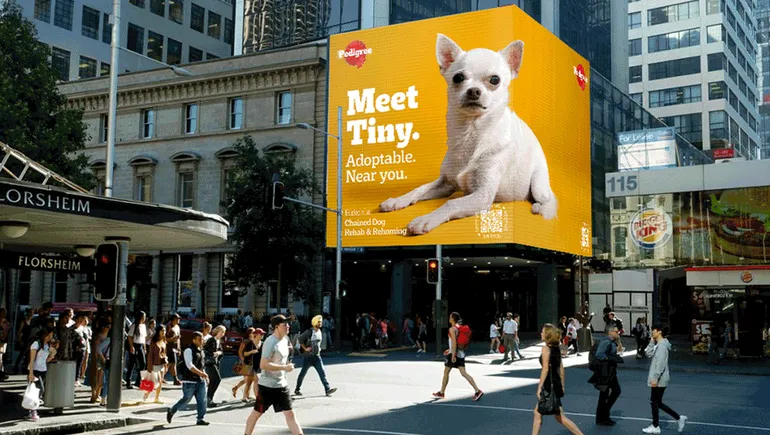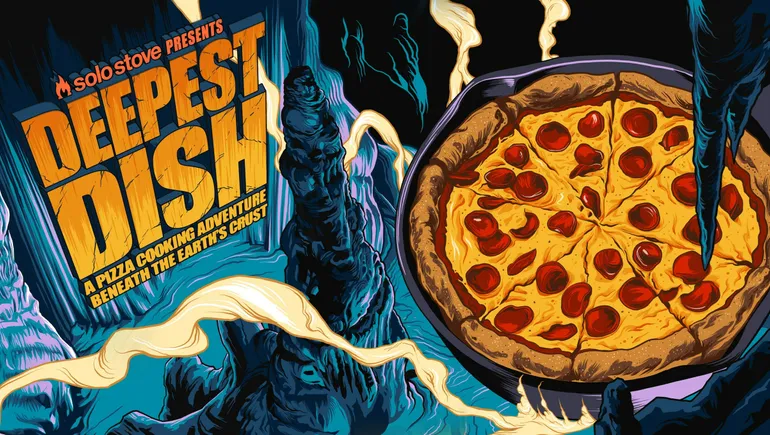
How eCommerce Is Turning Stores Into Just Another Marketing Channel
Remember when a brand’s website was little more than a 2.0 version of a brochure? In 2003, Prada’s website featured two photos taken from its ad campaign– nothing else. Versace’s homepage boasted more sophisticated web design and a Flash animation, but took an annoying 97 seconds to load. With a few exceptions – like LVMH group’s online shop eluxury.com – high-end brands back then saw the internet as just another promotion tool. The business of selling – that was what their exclusive, marble clad stores were for. “Web selling seems more appropriate for basic apparel, not high fashion,” said a Prada spokesperson to The Wall Street Journal in 2003. And this way of thinking has been hard to knock down.
But the tables are turning.
E-commerce has become the fastest growing sales channel in the luxury goods sector.
With the point of purchase increasingly shifting away from the high street and into our living rooms, what will the purpose of brick and mortar stores be if not selling things? In a David-and-Goliath-like reversal of roles, physical stores are becoming a marketing channel – just another step in the customers’ journeys towards a purchase, not their natural endpoint. Forward-looking retailers, those who refuse to see their physical stores become skeletons of a long gone era, have realized this. And this is what they are doing with their floor-space.
Customers as guests, not buyers
Spoiled by the freedom and convenience of buying online, today’s time-poor discerning consumers will only visit a physical store that promises an experience they can truly enjoy – a place where they are approached more as a guest than as a potential buyer.
That’s what digitally born French fashion brand Sézane understood when it opened L’Appartement in Paris. Its first physical showroom slash hangout space mimics a well decorated home – albeit one with a cosy movie theater in its basement. “I want people to feel welcome here, whether they buy or not,” said Morgane Sézalory to The New York Times. Selling is so not the focus that it’s not even possible to walk out with a shopping bag. Orders must be placed on the website.
This experiential concept store model has taken off thanks to online-first brands such as Bonobo and Warby Parker – where trendy eyeglasses share shelf space with good reads– and to high street brands like URBN group’s Anthropologie and Urban Outfitters. Anthropologie’s new superstore format takes the retailer’s already immersive customer experience one step further, mixing up their boho-chic fashion and lifestyle products with perfectly-staged living rooms, home styling consultations and atmospheric dining options that invite visitors to hang around, socialize and get inspired.
The cultured side of luxury
Scared of sacrificing their exclusivity, higher-end luxury retailers have been wearier of turning their shops into hangout places. But Tesla’s showrooms, which display the brand’s cutting edge technology and sustainability ethos in a gallery-like setting, are a lesson on how luxury brands can become more relatable while remaining aspirational. Through a combination of upscale location, sleek ambiance, museum-like installations, interactive technology and well-trained staff, Tesla’s message is : we are not here to sell to you; we are here to share our vision with you.
Luxury fashion and jewelry brands are also venturing into the museum format to hit that sweet spot between nurturing their mass appeal while guarding their exclusivity. Leveraging their heritage, and their ties with the equally aesthetic and alluring world of art and design, some luxury houses – Chanel, Hermès and Alexander Mc- Queen, among others – have held captivating exhibitions at major galleries, while others, like Audemars Piguet and Gucci, are doing the same by investing in their own museums.
Next-level treatment
While exhibitions and museums are usually restricted to cosmopolitan cities or symbolic locations, concierge- style services targeted towards high net worth individuals have become a widespread experience enhancing strategy among luxury maisons and premium department stores striving to remain relevant.
“Customers have told us they love going into hotels, getting rid of everything as they walk in and having it all taken care of,” said Shadi Halliwell, group marketing and creative director at Harvey Nichols. The department store is trying to replicate that experience in its revamped venues with the addition of personal shoppers, valet parking, plush private shopping lounges and a concierge taking visitors’ coats and bags at the door.
Louis Vuitton’s ‘VICs’ (Very Important Clients) in Beverly Hills, Paris, Singapore and Shanghai can even book lavishly-furnished penthouse-style suites for personal shopping parties, where they can get styling advice or try on shoes while getting pampered. In an era where the perks of going shopping must beat the perks of clicking away from the comfort of your hotel’s poolside lounge, Bain & Company has identified enhanced personalized services as a vital strategy to weather the blow of the sector’s “new normal” of sluggish growth.
Fewer, higher-impact locations
It’s not only customers who are getting bored of traditional rack-and-manikin filled shops. For businesses, the expensive inefficiencies of building and running brick-and-mortar venues are getting harder to justify.
Sézane claims that it can sell its shoes at one-fourth of the price they would have to charge if they had traditional offline shops. Online-only Everlane – who promises premium quality without the premium price tag- claims that its bestselling cashmere sweater, which costs US$42 to make, would sell for $210 in a traditional store. By cutting out middlemen and the overhead costs of a physical venue, Everlane can sell that sweater for $100.
The streamlined supply chains of online-pure retailers sound like a win-win solution. Yet people will always want to touch things, try them on, travel to a far away country and visit a quirky boutique they saw on someone’ Instagram feed.
The question, then, is how lean should distribution get?
And the answer is: as lean as possible.
This means replacing traditional stores with no-stock showrooms, to at least get rid of the cost and complexity of in-store inventory management. It means cutting down locations and investing instead in a few, strategically located flagship venues with a real “wow” factor. And it means only opening stores that are worth the pricey hassle. Online stores, with their 24/7 opening hours and measurable performance, can take care of the rest.

Last year, Gucci shut down five of its stores in China. But it also opened, in Shanghai, its first ever branded upscale restaurant, 1921 Gucci. Like its Gucci museum and café in Florence, it is the type of place that luxury buyers from around the world would want to visit, check-in at and upload a Snapchat story of. (Yes, adult luxury buyers use Snapchat too.) With tourists accounting for an increasingly large chunk of luxury sales – up to 60% in France and 50% in Italy, according to a Havas LuxHub report– it seems fitting to invest in iconic stores that can become renowned destinations in themselves.
The technology race
Brands trying to prove their tech savvy-ness through clever social media and ecommerce strategies need to beware of yet another element in the innovation race : technology-enabled in-store experiences.
From smart mirrors to virtual reality and augmented reality features, new technologies are already being tried and tested by forward-thinking retailers. Dior’s very own VR headset transports store visitors “behind-the-scenes” of the Paris Fashion Week runway, while Audi uses the same technology to take customers on virtual test-drives. In Ralph Lauren’s interactive fitting rooms, a customer who tries on two garments and indecisively ends up buying only one of them, will receive a text message with a link in case he or she wants to order it online later on. Remember the saying : “Nothing haunts you like the things you didn’t buy?” Well, those things can track you down now.
As technology zips forward at a dizzying pace, and the behaviors of discerning consumers change at a similar speed, the possible scenarios of what ‘the stores of the future’ will look like are limitless. But one thing is certain : they will not have cashiers.





